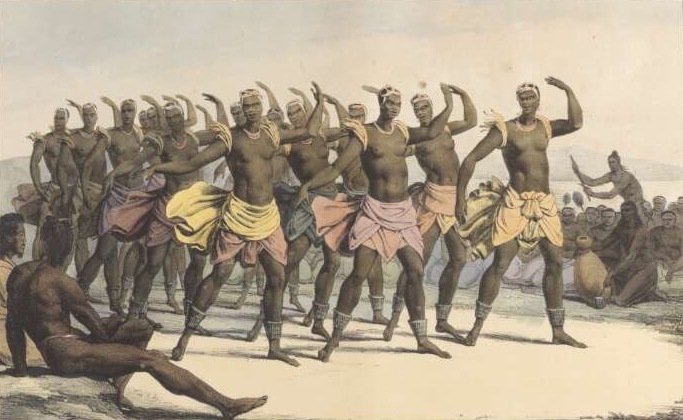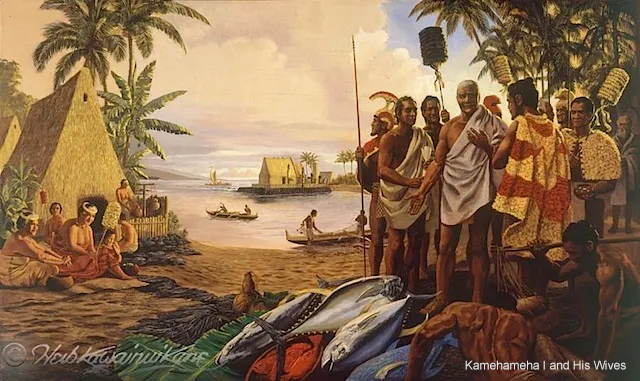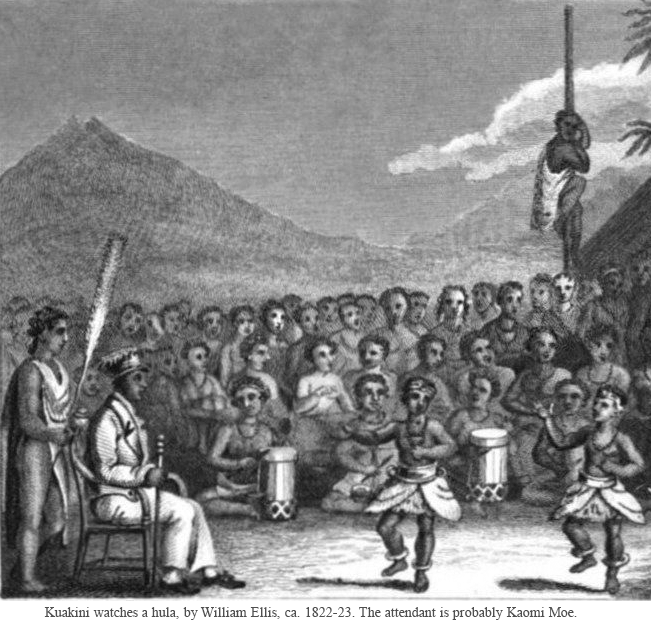
Traditional Hawaiian Society
For centuries, before LGBTQ+ movements for justice and inclusion landed on Hawaii’s shores, Kānaka ʻŌiwi flourished in a sophisticated society replete with diverse familial and intimate relationships.
The ‘Aikapu was a spiritual prohibition that forbade men and women from eating together and also prohibited women from eating certain foods. In contrast was a Hawaiʻi that enjoyed sexual freedom, or moe aku/moe mai, the freedom to sleep with whomever one wished, providing there was mutual consent.
Kānaka celebrated the genitalia and reproductive prowess of the chiefly ranks in Hawaiian society for the purpose of celebratory procreation amongst those whom were grounded to male/female partnerships via the many compositions known as Mele Ma’i. These compositions often were presented to signify the close of formal hula presentations and to encourage the public in attendance to return to their homes in hopes that they were encouraged by the chants to proliferate future generations.
(Banner Image: Danse des hommes dans les iles Sandwich. Lith.e par Franquelin d'apres Choris. Lith. de Langlume i de l'Abbaye. [Paris, 1822].)
Story by Hinaleimoana Wong-Kalu
(Image of Female dancers of the Sandwich Islands by Louis Choris, the artist aboard the Russian ship Rurick, which visited Hawai'i in 1816.)
Some examples rooted in Kānaka worldviews:
ʻo ia - genderless pronoun referring to he/she/it
māhū - duality of male and femal elements of mind, heart, and spirit in one physical form
aikāne - a type of deeply intimate relationship of great bond, trust, and sharing of life’s journey and responsibility between men/men and women/women
noho / moe aikāne - being in that same-gender relationship
punalua - the relationship between two or more partners of a shared/mutual partner
poʻolua - the child of two fathers/father figures
Sex and sexuality along with gender roles and expressions were embraced as natural, integral parts of life. They did not require one to identify by one’s genitalia, or by whom one wished to be intimate.
Kānaka enjoyed both monogamous and polyamorous intimate relationships (as in punalua relationships and also of po’olua, children of punalua relations) without the stigma, prejudice, or discrimination that arose when differing religious beliefs and practices were introduced and/or adopted in the islands.
Ko Ma'i e Ka Lani Kalakaua performance.




